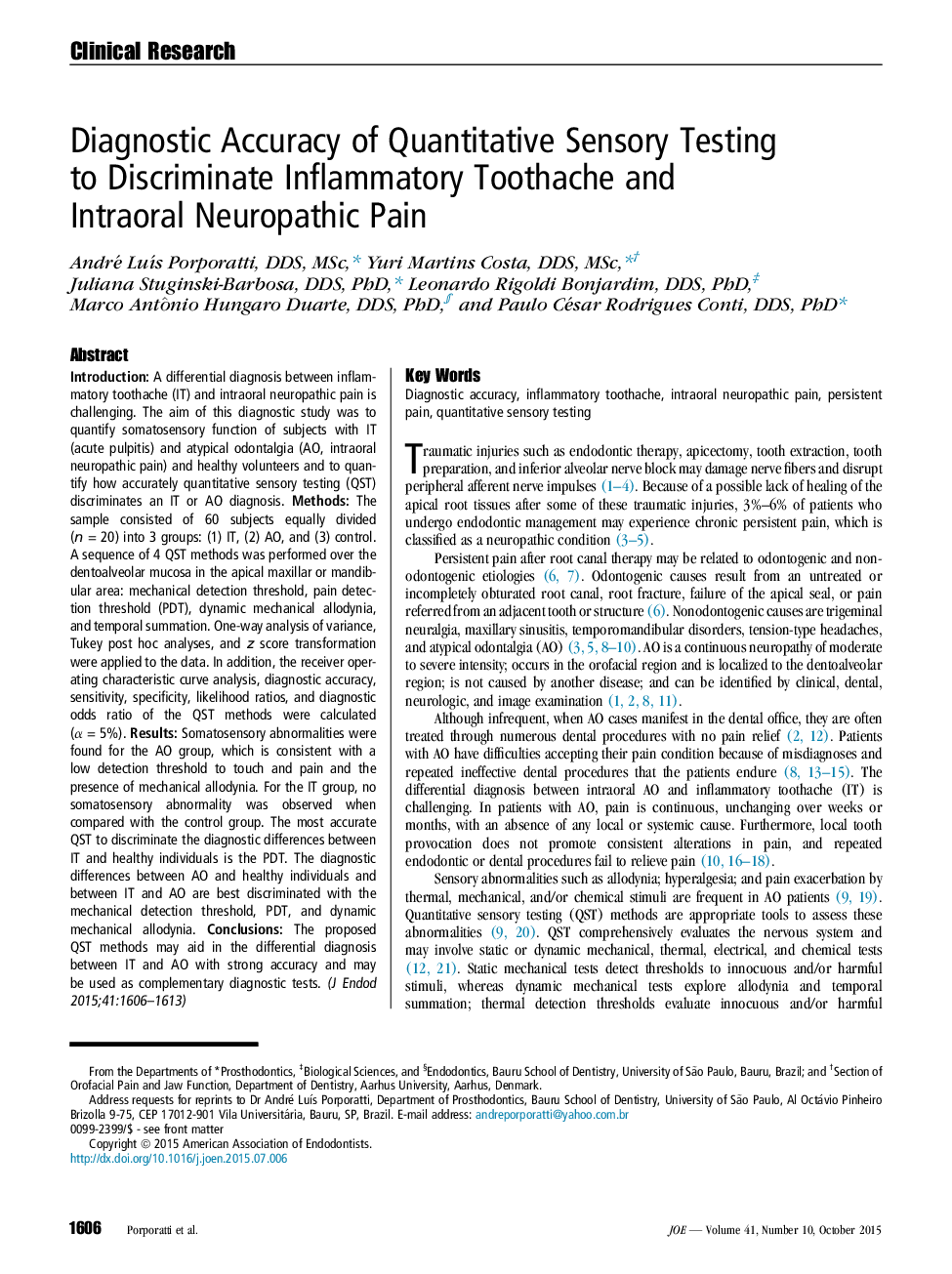| Article ID | Journal | Published Year | Pages | File Type |
|---|---|---|---|---|
| 3148058 | Journal of Endodontics | 2015 | 8 Pages |
IntroductionA differential diagnosis between inflammatory toothache (IT) and intraoral neuropathic pain is challenging. The aim of this diagnostic study was to quantify somatosensory function of subjects with IT (acute pulpitis) and atypical odontalgia (AO, intraoral neuropathic pain) and healthy volunteers and to quantify how accurately quantitative sensory testing (QST) discriminates an IT or AO diagnosis.MethodsThe sample consisted of 60 subjects equally divided (n = 20) into 3 groups: (1) IT, (2) AO, and (3) control. A sequence of 4 QST methods was performed over the dentoalveolar mucosa in the apical maxillar or mandibular area: mechanical detection threshold, pain detection threshold (PDT), dynamic mechanical allodynia, and temporal summation. One-way analysis of variance, Tukey post hoc analyses, and z score transformation were applied to the data. In addition, the receiver operating characteristic curve analysis, diagnostic accuracy, sensitivity, specificity, likelihood ratios, and diagnostic odds ratio of the QST methods were calculated (α = 5%).ResultsSomatosensory abnormalities were found for the AO group, which is consistent with a low detection threshold to touch and pain and the presence of mechanical allodynia. For the IT group, no somatosensory abnormality was observed when compared with the control group. The most accurate QST to discriminate the diagnostic differences between IT and healthy individuals is the PDT. The diagnostic differences between AO and healthy individuals and between IT and AO are best discriminated with the mechanical detection threshold, PDT, and dynamic mechanical allodynia.ConclusionsThe proposed QST methods may aid in the differential diagnosis between IT and AO with strong accuracy and may be used as complementary diagnostic tests.
